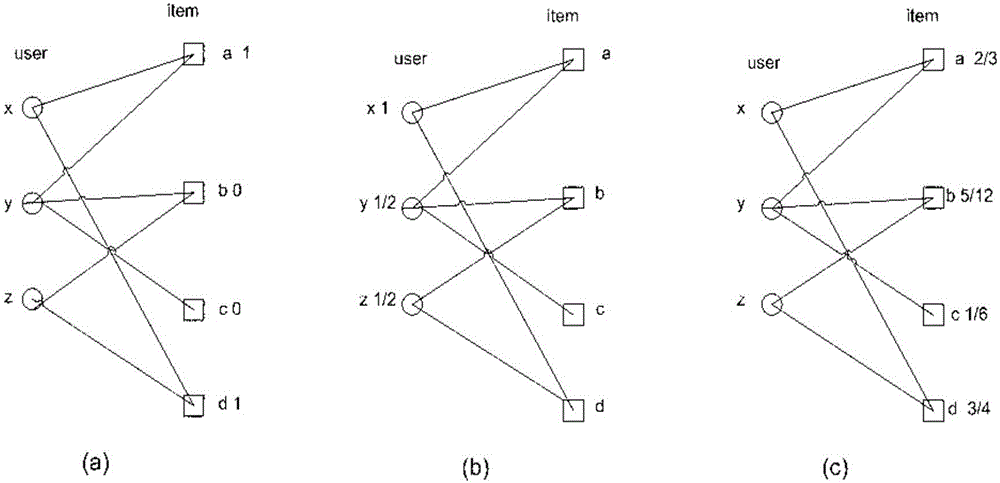Mixed collaborative recommendation algorithm based on WNBI and RSVD
A recommendation algorithm and algorithm technology, applied in computing, special data processing applications, instruments, etc., can solve the problems of recommendation quality decline, recommendation quality impact, algorithm data sparseness, etc., and achieve the effect of improving accuracy and solving the problem of sparse scoring matrix
- Summary
- Abstract
- Description
- Claims
- Application Information
AI Technical Summary
Problems solved by technology
Method used
Image
Examples
Embodiment Construction
[0018] In order to make the objectives, technical solutions, and advantages of the present invention clearer, the present invention will be further described in detail below in conjunction with specific embodiments and with reference to the accompanying drawings.
[0019] The present invention studies a hybrid collaborative recommendation algorithm based on WNBI and RMF (RSVD_WNBI). The WNBI algorithm is a recommendation algorithm based on complex networks and graph theory. It abstracts users and items into nodes in the network, and can effectively use the hidden in the network Information is used to make recommendations, thereby improving the diversity and recommendation accuracy of the system. Regularized Singular Value Decomposition (RSVD) can project a high-dimensional user-item matrix into a low-dimensional space, thereby Reduce the sparsity of data. Therefore, using the item's neighbor information obtained by the WNBI algorithm to regularize the RSVD model can effectively m...
PUM
 Login to View More
Login to View More Abstract
Description
Claims
Application Information
 Login to View More
Login to View More - R&D
- Intellectual Property
- Life Sciences
- Materials
- Tech Scout
- Unparalleled Data Quality
- Higher Quality Content
- 60% Fewer Hallucinations
Browse by: Latest US Patents, China's latest patents, Technical Efficacy Thesaurus, Application Domain, Technology Topic, Popular Technical Reports.
© 2025 PatSnap. All rights reserved.Legal|Privacy policy|Modern Slavery Act Transparency Statement|Sitemap|About US| Contact US: help@patsnap.com



